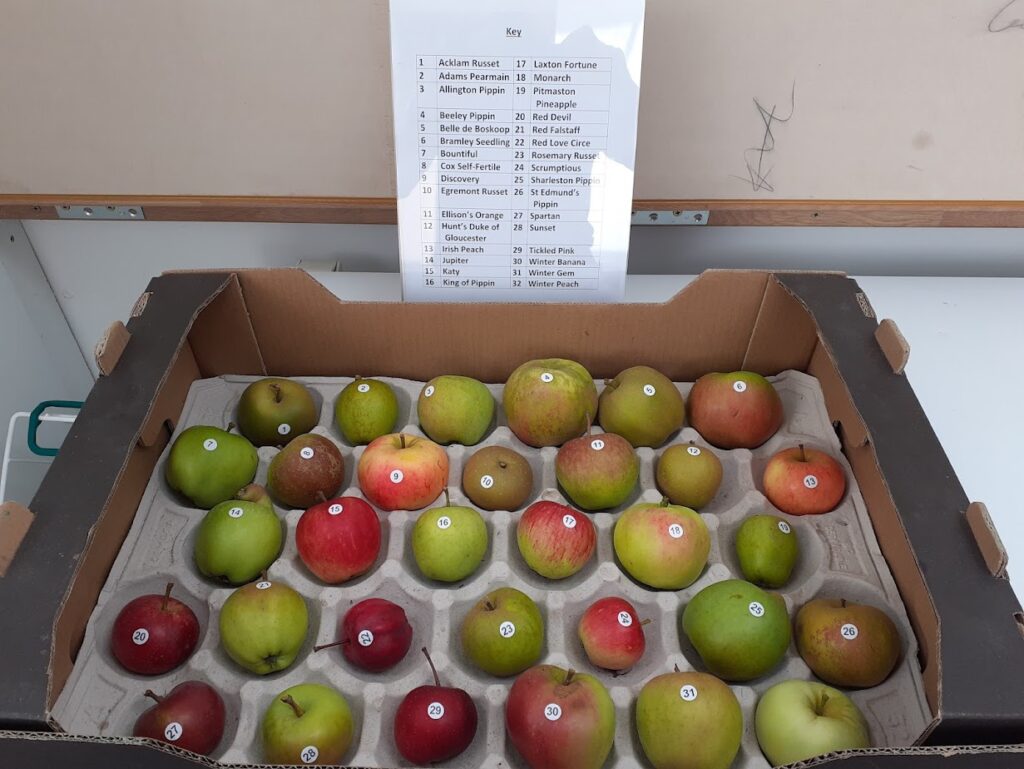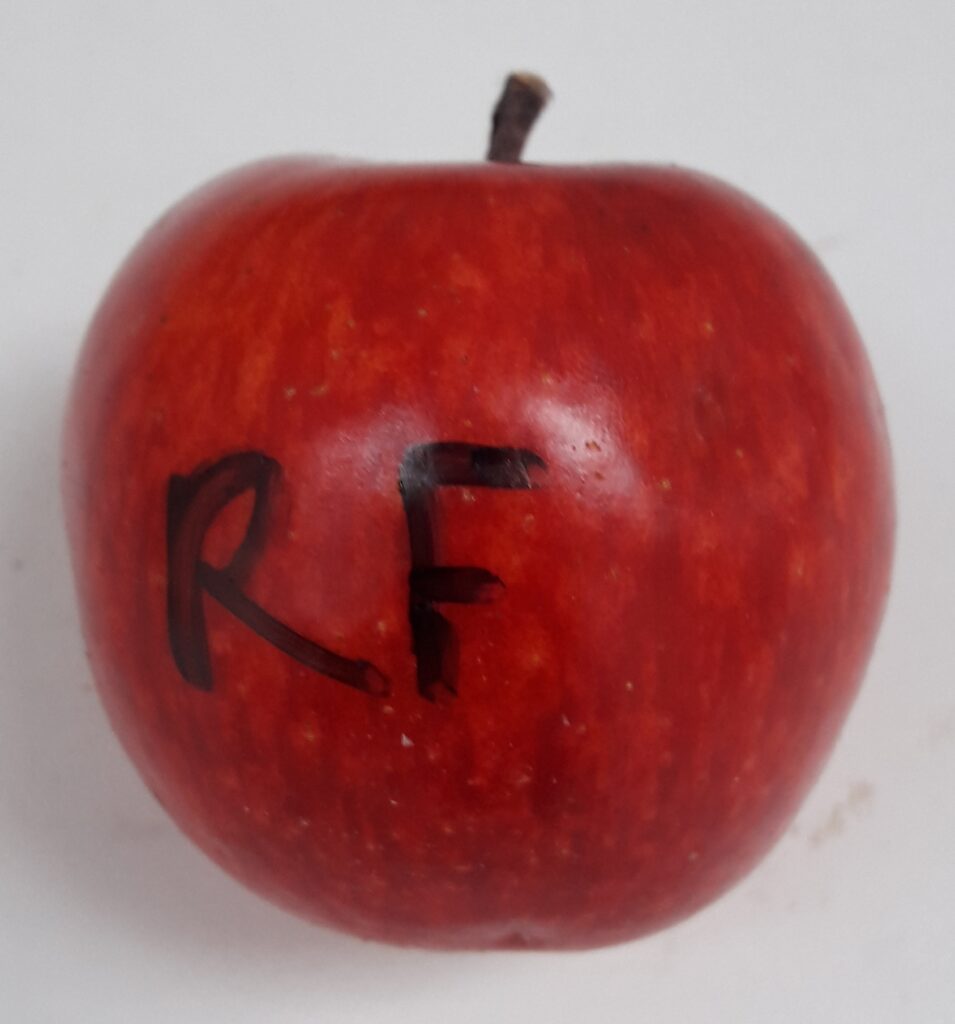
Share this article
Recently I gave a talk on apples and at the end was asked for a list of my favourite five varieties.
So, here’s my top ten (and a bonus):
1 – Pitmaston Pineapple
2 – Egremont Russet
3 – Herefordshire Russet
4 – Red Falstaff
5 – Spartan
6 – Lord Lambourne
7 – St Edmund’s Pippin
8 – Allington Pippin
9 – Winter Banana
10 – Red Devil
11 – Bramley Seedling
Not only does Pitmaston Pineapple have a name and a shape (small, conical, size of a golf ball) to break the ice at parties, but it’s a fabulous apple to eat. Rich, sweet, nutty, and in a good year, with a hint of pineapple. Bred in 1785 by Mr White in Pitmaston (would you believe) in Worcester. A connoisseur’s apple.
Egremont Russet IMHO is the king of russets and if Pitmaston P is having a quiet year, wears my apple crown.
Thought by many people (not NFG’ers of course) to be the only russet. Origins are unknown, but believed to be English, first recorded in 1872. Stores til December. Fruit are rich, nutty, and sweet. Skin a marmite thing, but I’m a fan.
Herefordshire Russet is a newish variety bred by Hugh Ermen in the 1990s. It is my mother’s favourite apple (hello, Mum!).
Conical shape, looks like a big Pitmaston P (have I mentioned that’s a fab apple?), but is still only a medium-sized apple. Crisp, juicy and with ‘the aromatic flavour of the Cox’ (Rosie Sanders).
Red Falstaff is another newish variety and is one of the first trees I planted (a decade ago). It now gives a large, reliable crop.
A sport of Falstaff (James Grieve x Golden Delicious) developed in Kent in the 1980s. Stores til January. Very good flavour, especially on the sunnier side of the tree.
Spartan apples taste as good as they look. And if looks alone was what shifted apples in supermarkets, then every chain would stock Spartan.
Spartan are bright, crimson apples with a distinctive white bloom. They look beautiful on the tree – think Adam and Eve in the garden of Eden – and almost as good if you slice them open. Their flesh is a brilliant white. And they taste fresh, sweet, delicious. I don’t know anyone who’s tasted them doesn’t immediately fall in love.
Originated in Canada (BC) (British Columbia not two centuries ago), from McIntosh x Yellow Newtown Pippin.
Lord Lambourne was raised by the Laxton brothers in 1907 from James Grieve x Worcester Pearmain. Interestingly, the same parents were crossed in Sweden forty years later to produce Katy (Katja).
Apples are juicy, sweet, with a good flavour. Stores til late November.
St Edmund’s Pippin is the earliest russet, and also a favourite of the Northern Fruit Group. Raised in 1870 in Suffolk.
Large apples covered in classic sandpaper skin. Striking to see on the tree and with excellent flavour.
Allington Pippin don’t look so much (dull, light-green) but are so much! Bred by Thomas Laxton about 1880. Stores til December. Once, widely grown in Kent and Cambridgeshire, and should be again! Crunchy, creamy-white flesh. Rich flavour, juicy. A delicious apple!
Winter Banana is a surprising apple, and not just because of the name which seems like a joke. Always raises an eyebrow when mentioned.
Originally from Indiana, USA (1876). Stores til March. The apples have a surprising taste – there really is something ‘bananery’ about it. Do seek them out!
Red Devil is another newish apple bred by Hugh Ermen. It is self-fertile, which could be useful if you only want to grow one tree. The apples are large, red, and striking on the bough. Can be plucked and eaten, hence attracts children and wasps.
Sweet, with a hint of strawberries. Doesn’t store.
Finally, Bramley Seedling. Two million trees in the UK. Included because I didn’t want a large postbag complaining I’d not included a culinary apple. Despite Raymond Blanc being ‘a sworn enemy’, I think it’s an essential variety. It makes great dried apple rings and stores the best of my entire collection, at least til May.

So, that’s it. Eleven for the price of ten. The taste of pineapple, bananas, and strawberries. Earlies, mid-season’s, and lates. Desserts and a culinary. English, American, Canadian. A Northern Fruit Group favourite, my mum’s favourite. The king of russets.
Refs
The Apple Book, Rosie Sanders
The Book of Apples, Joan Morgan and Alison Richards
The Lost Orchard, Raymond Blanc